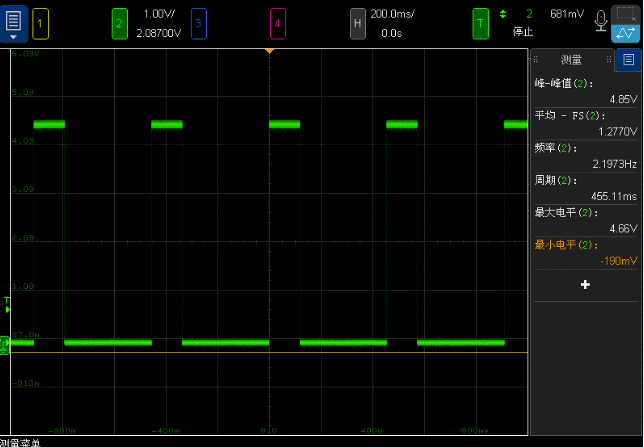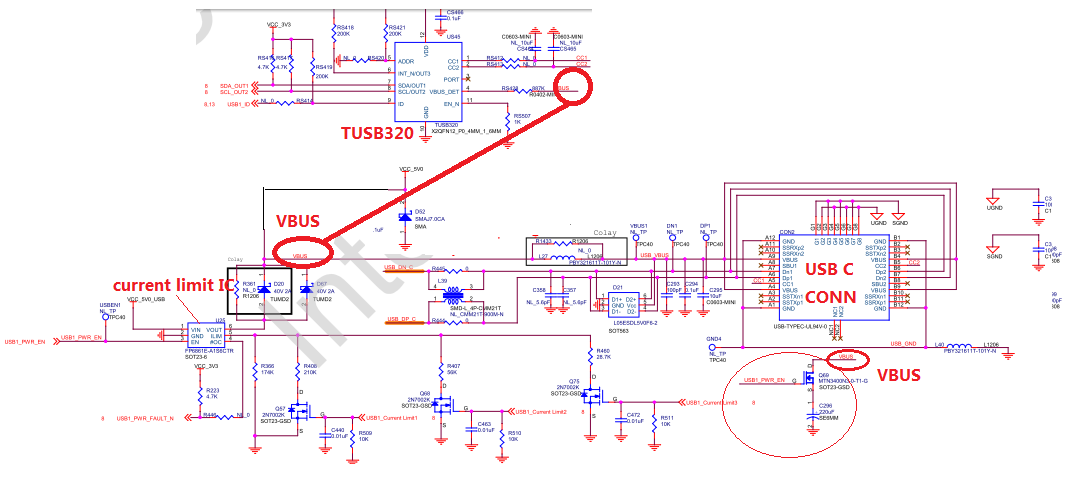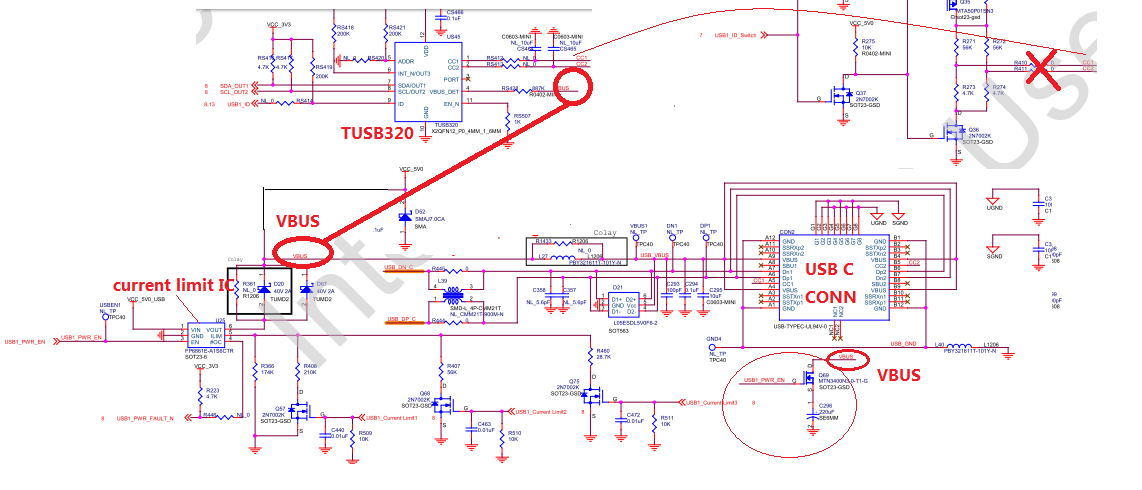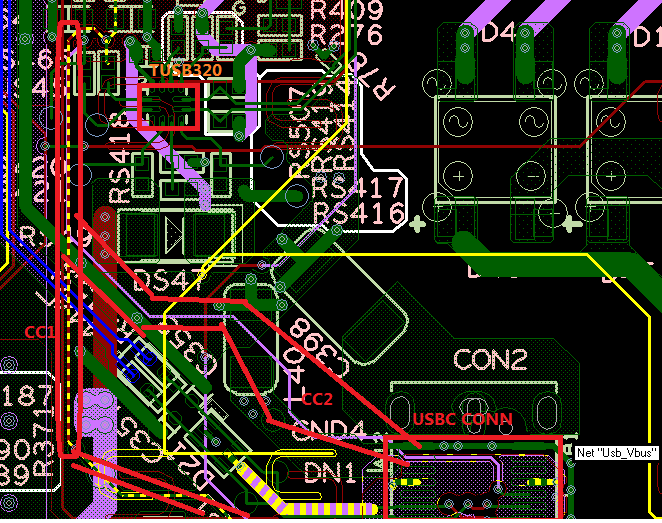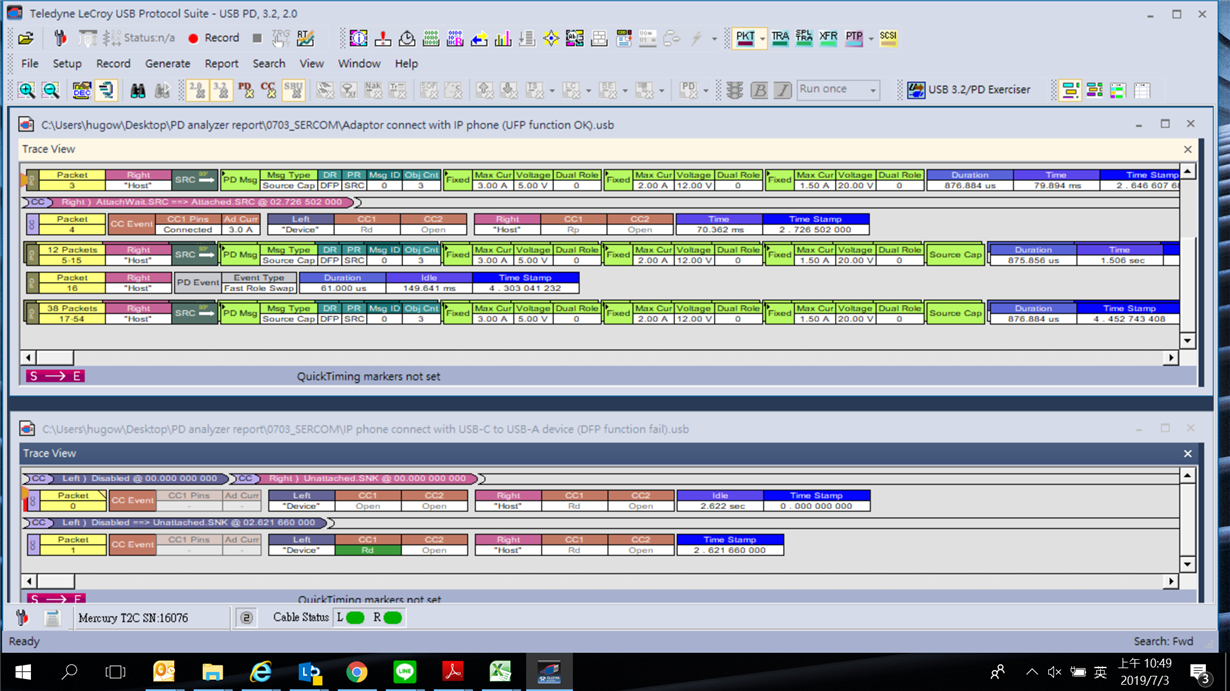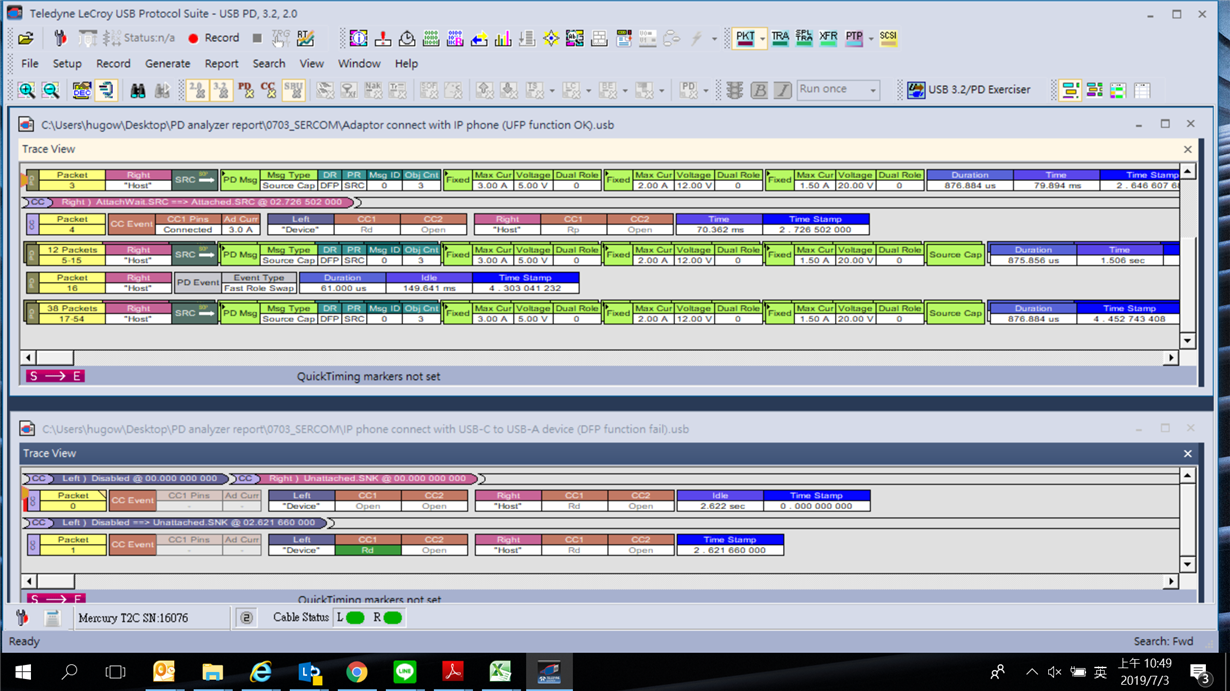Other Parts Discussed in Thread: TUSB321, ,
Hi Sirs,
Sorry to bother you.
Our schematic as below.
Our USB C is connected to the computer through the cable. The Type C connector is inserted in a certain direction. The level of cc1/cc2 is about 0.45V, and the other side is inserted, cc1/cc2 level. It is 0, but the USB_ID of both states is high.
Looks it's not be automatic detecttion .
Could you help to check i?, thanks!!.


